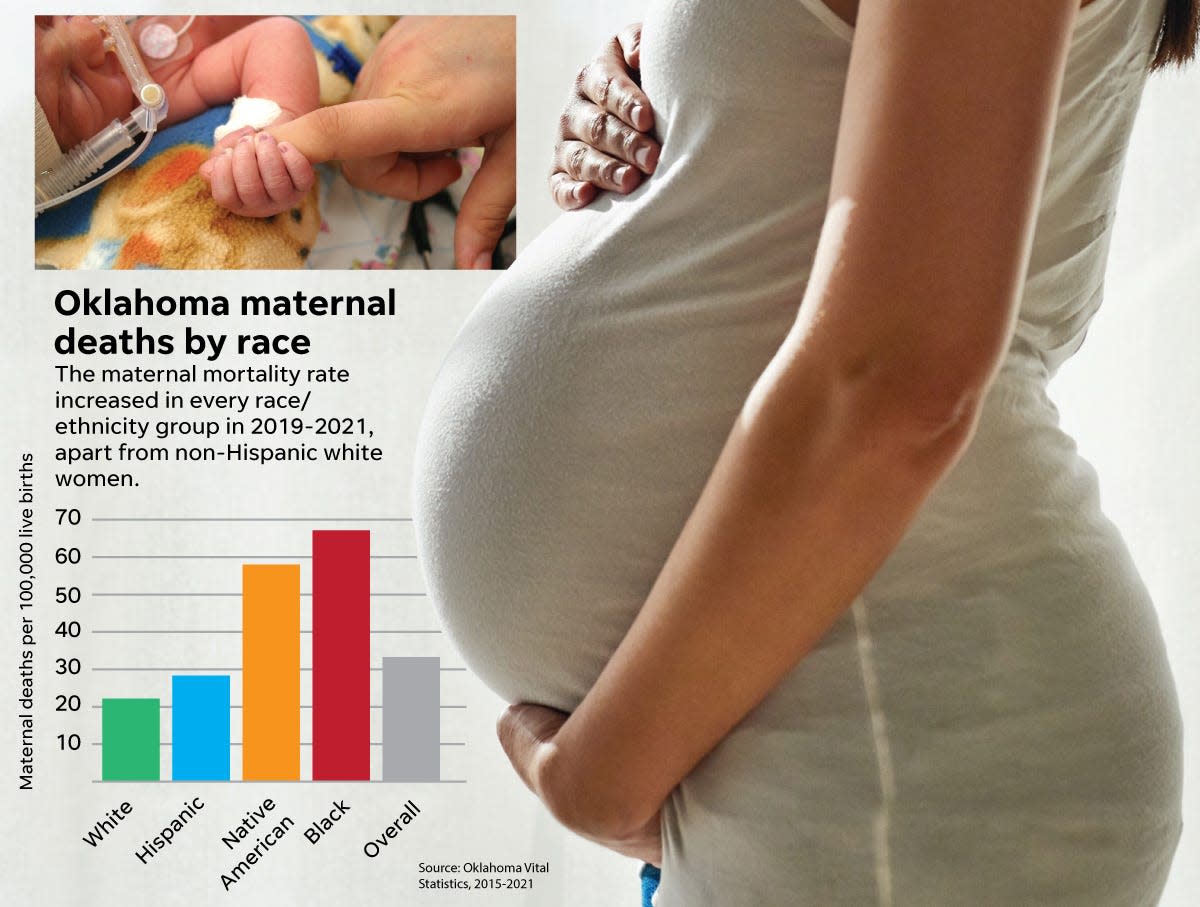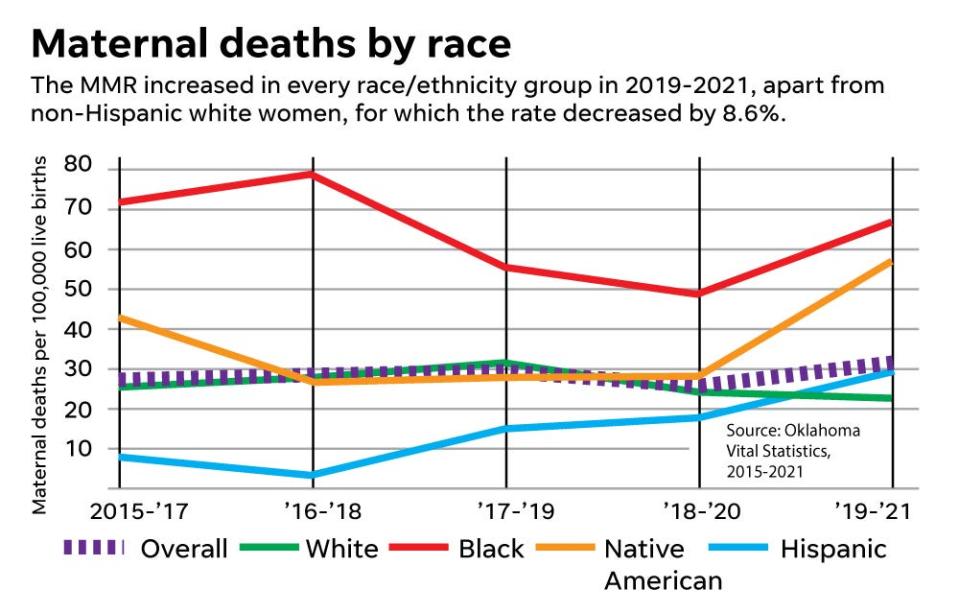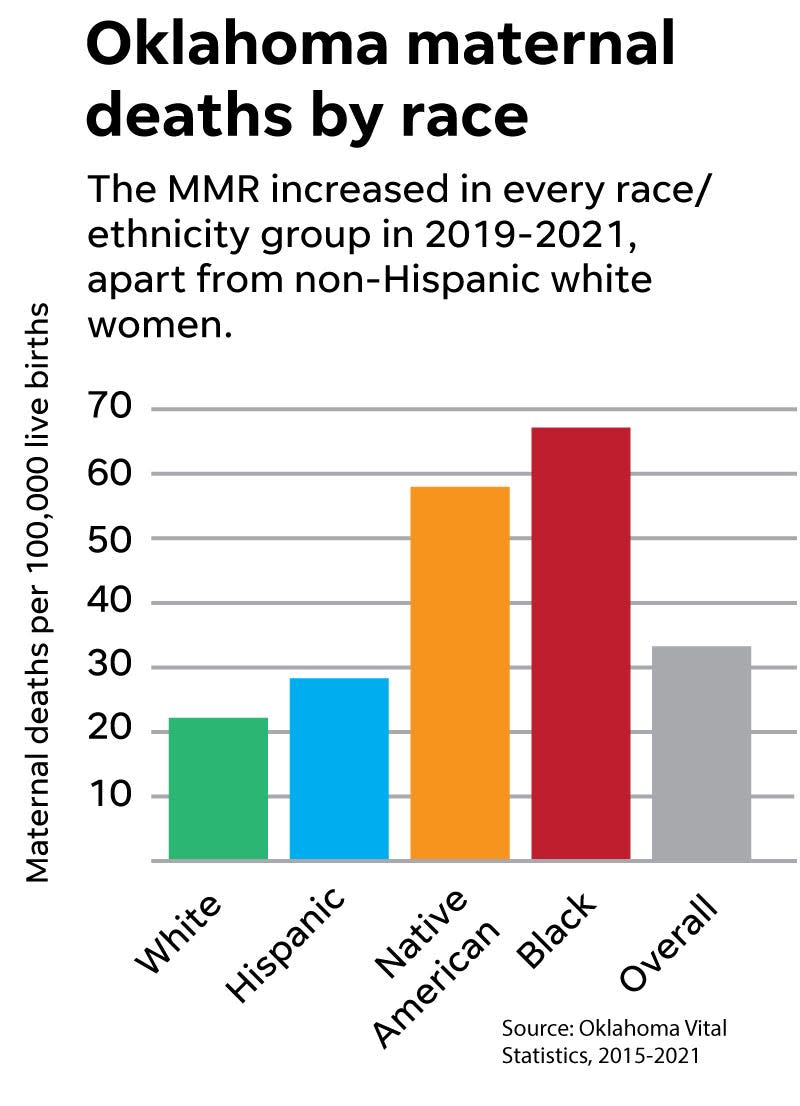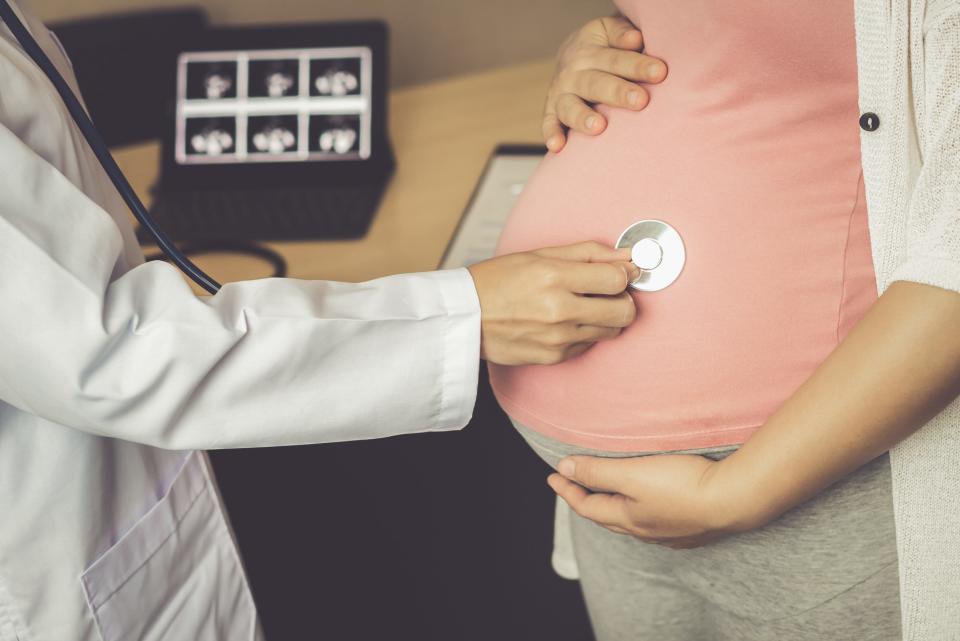Oklahoma has one of the highest rates of pregnancy-related deaths, and it's gotten worse

The death rate among Oklahoma women having children has risen sharply, a new state report says. The primary cause: the COVID-19 pandemic.
Although Oklahoma's maternal death rate had declined prior to 2018, a report from the Oklahoma Maternal Health Task Force shows the number of deaths increased from 25.2 per 100,000 live births for the 2018-20 reporting period to 31 deaths per 100,000 in the 2019-21 reporting period.
A maternal death is defined as the death of a pregnant woman or a death that took place within 42 days after the termination of pregnancy, "from any cause related to or aggravated by the pregnancy or its management." That definition excludes deaths for accidental or incidental causes.
Nationwide, the report said the maternal mortality rate for the United States was more than three times the rate of other developed countries.

According to the Oklahoma State Department of Health, records from the Centers for Disease Control and Prevention show Oklahoma persistently ranks among the states with the worst rates of maternal deaths in the nation.
Between 2017-2019, Oklahoma's maternal mortality rate was 23.5 maternal deaths per 100,000 live births. This is above the national average of 20.1 maternal deaths per 100,000 live births.
Why maternal deaths might be so high in Oklahoma
The most likely contributor to the increase in maternal mortality at both the national and state levels was the emergence of COVID-19.
"Several groups were, and continue to be, at greater risk of severe illness due to COVID-19, including those who are immunocompromised, have certain disabilities, or have underlying health conditions, such as those who are pregnant or recently pregnant," the report said. "The greatest number of deaths, about 25% of maternal deaths in 2020 and 2021, were related to COVID-19."

Additionally, the greatest increase in maternal deaths occurring in the later months of 2021 was likely due to an outbreak of the Delta variant, which surfaced in July of that year.
The pandemic also affected maternal health in other ways, the report said. A reduction in health care services, transportation and child care challenges — all centered on the fear of contracting COVID-19 — could have contributed to reduced access to health care, delayed or forgone pregnancy care and worsened outcomes,
Grading Oklahoma: A look at maternity health in the Sooner State
Despite the bad numbers, state health officials said encouraging women to get regular checkups and increasing efforts to address maternal risk factors could help reduce future deaths.
"Every interaction with any health care provider should be used as an opportunity to assess for opportunities to educate individuals on healthy behaviors and link them with resources," Erica Rankin, a spokesman for the state Health Department, said.
Rankin said new and expectant mothers could improve their health by having chronic conditions treated and under control before getting pregnant and getting the necessary vaccinations.
The state’s infant mortality rate, too, continues to remain high. A new study by the March of Dimes puts the state’s infant mortality rate at 7.1 deaths per 1,000 births, well above the nationwide number of 5.4 deaths per 1,000 births.

Infant mortality rate in Oklahoma is also high
Although state health experts agree that challenges remain in the effort to reduce maternal and infant mortality rates, other issues may be harder to address. Rankin said several international studies show better maternal and infant outcomes occur when midwives and doulas are included in the maternity care team. She said that as of July 1, Medicaid now covers doula care.
Rankin said numerous studies showed there are currently 44 delivering hospitals in the state and 77 counties. “About a third of these hospitals are located in the metropolitan areas of the state, leaving many counties without a hospital that delivers babies and has maternity care providers,” she said.
The March of Dimes report said state officials could improve health outcomes for both mothers and infants by adopting paid family leave policies and by creating a perinatal quality collaborative to identify and improve quality-care issues in maternal and infant health care.

This article originally appeared on Oklahoman: Oklahoma maternity death rate among highest in the United States

